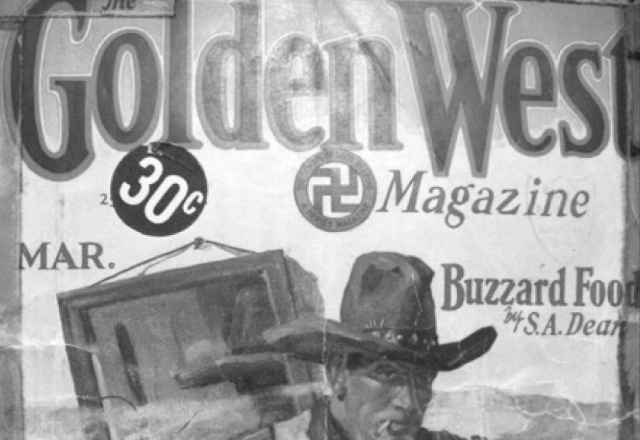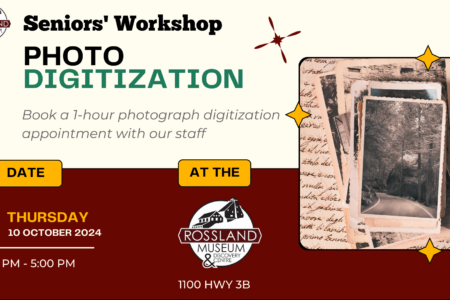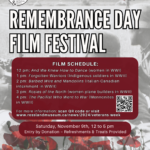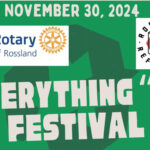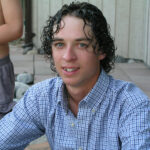TALES AND LEGENDS OF THE MOUNTAIN KINGDOM: Rossland’s “Other Father Pat”
I’ve written before about the Flying Steamshovel and Rossland’s famous first Anglican clergyman, Father Pat. Well, through the miracle of the internet, I recently came upon the story of a Rosslander who became known as Rossland’s “other Father Pat”, a Mountain Kingdom native who, amongst other publications I’ll discuss below, wrote the definitive and much distributed version of the story of Lou Gagnon and his flying steamshovel.
Granted, he wrote the story over 40 years after it happened, but in order to get the details right, he interviewed some old-timers who gave him sworn statements about the event, and the resulting article was published in American Helicopter Magazine. Interestingly enough, this second Father Pat originally submitted the article to Maclean’s Magazine, who didn’t think the story was plausible and therefore rejected it.
This Father Pat, whose full name was Thomas Patrick Freney, had a long history of magazine publication, it turns out. Although he is perhaps best known as the Diocese of Nelson’s parish and diocesan historian, as well as a local historian, Freney’s love and most potent creative outlet was a subject that might be surprising for a Catholic priest: he was the author of a whole slew of western pulp fiction pieces that were published in several prominent magazines of the time.
Before I go any further, I need to say that there is not a lot of information online about Freney, but there is one definitive article about his life and publications available online, written for British Columbia History Magazine and published in its winter 2011 edition. It’s an award-winning piece by Ron Welwood, who was the Diocese of Nelson’s archivist. I gratefully acknowledge his article as my primary source for this article, since first hand evidence of Freney and his writing is quite thin on the ground.
Thomas Patrick Freney–who took on the nickname Pat when he was ordained in 1932–was the oldest son of new Rosslanders John Henry Freney and Mary Catherine Gibbons. John Henry, in an interesting side note, was a notable Irish contractor and bricklayer who was responsible for building, between 1894 and 1895, a well-known heritage house in the Vancouver neighbourhood of Strathcona. 640 East Georgia Street is significant because it’s one of the only brick houses in Vancouver’s history, and its style, the popular in Ireland British Industrial Townhome, is the only example in Vancouver; it appears on the maps of historic walks around old neighbourhoods in Vancouver because of its uniqueness.
The house was originally inhabited by the Gibbons family, who were relatives of the Freneys. Perhaps this is where the John Henry fell in love with Mary Catherine; whatever the case, they both ended up in the same place, and that is in the Calvary Catholic Cemetery in lower Rossland, but I don’t know much more about them than that.
Thomas Patrick, whom I’ll refer to as Pat from now on, was born in Rossland during the height of the town’s boom, December 19, 1897. He attended local Rossland schools, which probably meant that the attended that horrible Central School with all the issues at the corner of St. Paul St. and Fourth Avenue. He would have missed the fire that razed that school to the ground, as after he was finished there in 1916, he went off to Gonzaga University in Spokane until 1918. After that, he went south to California, where he studied philosophy at St. Patrick Seminary in a place called Menlo Park. But that pursuit didn’t last long, because between 1920 and 1927, Pat made a living writing in California. Ostensibly, he worked as a journalist, and Welwood cites Hearst as Pat’s employer as he did “journalism, magazine writing, and kindred pursuits.” There was also, according to Welwood’s article, some possibly Hollywood experience. But it was Pat’s love of western pulp fiction that stoked his creative fire and starting in 1924, his works began to be published in magazines.
The first story to be published was “Cheap Tools” in the Argosy All-Story Weekly in New York, a story that was originally rejected by Redbook (oh, how times have changed). For this story, Pat was paid $75. Then, in 1927, Pat’s story “Theories and Nuggets” was published in Maclean’s Magazine (again, how times have changed), followed by two more stories also in Maclean’s, “Footnotes” and “The Release” in 1928.
After a brief sojourn in Rossland in 1927-1928, Pat decided he wanted to become a priest and went to a seminary in Edmonton–where he continued to write western pulp fiction! In December 1928, he sold a story entitled “Yellow Buzzard” to Western Trails, who paid him $60, and then, the next year, a publication called Golden West bought the serial rights to “Yellow Buzzard” for $50. Pat then submitted a story to Maclean’s again, this one called “Holesome Wreckreation” (oh how I wish I could read this just to find out about the pun!), but it was rejected because the editor didn’t think it was the right fit. Seminary tuition was not free, apparently, and Pat’s writing income paid for it–only the powers that be there didn’t appear to know it! Once he was given a reprimand for reading a novel of the genre he wrote while in the seminary, but the
seminary bigwigs had no idea this was something Pat wrote on his summer breaks and sold for actual money!
After being ordained in 1932, Pat was assigned to a few different places–Vancouver, Revelstoke, Princeton, then back to Vancouver–and his literary talents were eventually embraced by his bosses, as he was placed in charge of editing the church publication, BC Catholic. Reassigned again to Trail’s Francis Xavier parish in 1935, that tenure was short as soon Pat was put in charge of producing the diocesan newspaper for the Diocese of Nelson. The purpose of this paper, according to Bishop Johnson, whose idea it was, was to raise funds for the diocese. Pat was the natural choice, due to his considerable experience. In 1937 the first edition of The Prospector was produced by the Rossland Miner.
Naming the diocesan newspaper The Prospector was an interesting choice, as it sounded like a mining industry publication, and perhaps this is why it sold so well. The subscription rate was $1 per annum, and at one point there were 4400 subscribers, making it the second highest circulating weekly newspaper in the province!
But Pat was not just editing The Prospector; he was also publishing his own series of western pulp fiction short stories in it! And why not? Now living in Cranbrook, with lighter duties as hospital chaplain, Pat produced 37 episodes of an ongoing story called “Ghost Camp” which was set in “the early days of Phoenix [BC] in the Boundary country.” He typed out the stories in the offices of the Nelson Daily News. In 1939, Pat paid for the services of a literary agent in New York, a literary consultant in Massachusetts, and consulted with a literary critic in Arizona. There were more story submissions, a novel called Ghost Creek, and an unnamed novel “concerning a deep-sea diver attempting to raise a fortune in placer gold from a volcanic hole under a California river.”
Pat’s health began to fail in the 1950s, starting with crippling arthritis in his arms, fingers, and spine. In 1963, he had two heart attacks. He was sent to Victoria for a medical assessment, and it was found that he had brain damage. He died October 29, 1964, and is buried in Cranbrook.
Pat’s legacy was pretty significant. As editor of The Prospector for so many years, he’d accumulated a ton of local and diocesan history that Pat had bequeathed to Gonzaga University, though after a legal kerfuffle, all the materials he’d collected over the years were returned to the archives at the Nelson Diocese. Rosslanders have their account of the Flying Steamshovel story, and the world has a collection of Rossland and Kootenay-inspired western pulp fiction floating around out there somewhere–in archives, or in in basements, or in storage containers. If only I could find some to read…I’d be very interested to see how he characterized his homeland and what adventures his characters got up to. I can’t help but think of him as Rossland’s Louis Lamour!
Sources:
1. http://bchistory.ca/awards/article/Welwood2.pdf
2. http://www.flickr.com/photos/heritagevancouver/3859623489/
3. https://www.placeling.com/users/vanheritage/magazine?lat=49.2784135&lng=-123.090605
4. http://www.vancouverheritagefoundation.org/projects/documents/StrathMarkets_2010.pdf


